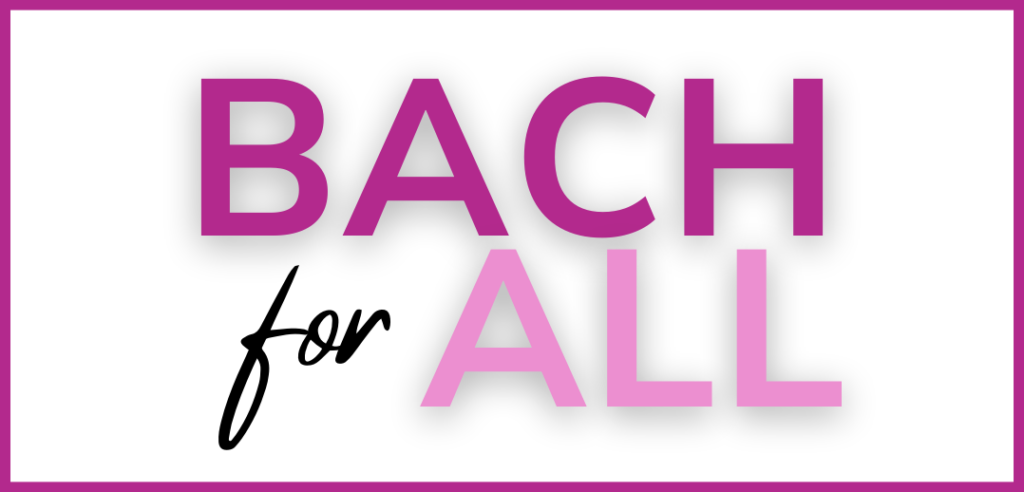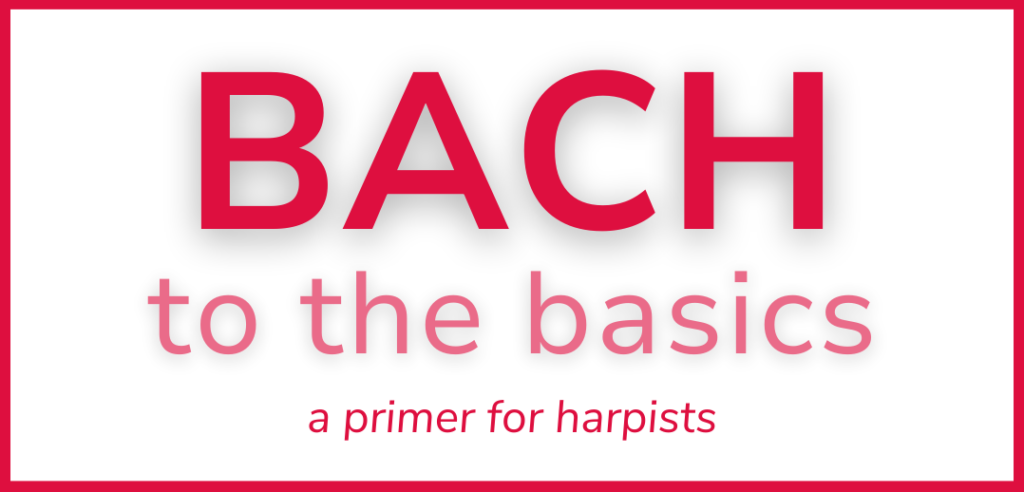—by Megan Metheney
Improv. In classical circles it is often considered a “special” skill reserved for advanced students or an elective class taken to check off a graduation requirement. Improvisation is for the jazz musicians, while classical musicians need to stick to what’s written on the page.
Improvisation is invaluable for musicians of every age and skill level. It’s something to be developed, and worthy of the time it takes to nurture.
But what if improvisation was a skill we consciously develop with all harp students instead of reserving it for advanced or especially creative ones? What if everyone learned how to improv just like they learn crossovers and muffles?
I was at a Lyon & Healy Jazz & Pop Harpfest years ago and found myself pondering these questions as I was trying out their Silhouette electric lever harp on display. It happened to be green. The creative energy was contagious and inspiring, and I loved being saturated in it. I began noodling around and enjoying a taste of this little harp, and a skeleton of a piece began to emerge.

Since then, that little piece has evolved and taken more form. I named it “Green Harp” not only because that Silhouette harp was green, but because green is the epitome of how I want my music to sound: an ever-changing, alive, organic, authentic form of expression. I even like that green can convey an immature and youthful quality—as if my music will remain something I’m continually striving to improve and develop.
I now use this little piece with every single student I get to spend time with, especially beginners, even at their very first lesson.
I also use this piece in an ensemble setting. I used it while working with a group of eight beginning harpists when I taught in the public school system in Odessa, Texas. I use it when I visit a harp ensemble as a clinician, like Blue Lake Fine Arts Camp in Michigan, where there is a wide range of skill levels. “Green Harp” is easily tailored to fit any harpist or group of harpists.
This is a piece that is partly composed and partly improvised. It’s a fun way to end a lesson, it’s a fun way to start a lesson, and it’s a fun way to spend an entire lesson. But within that fun, the piece provides a time to discover ways to grow as a musician.
There are different approaches to teaching improvisation and many resources available to teachers. “Green Harp” is not really a method, but rather a single piece to use that applies directly to improvisation at the harp.
Improvisation is invaluable for musicians of every age and skill level. It’s something to be developed, and worthy of the time it takes to nurture. If you want to develop improvisation skills with your students but aren’t sure where to start, “Green Harp” is an accessible jumping off point.
The A Section
Dive in with the A section—it’s the part that is composed and constant. Ideally, the student plays the melody, while the teacher plays both the left and right hands at their own harp.
I teach this melody by rote. I love Webster’s Dictionary definition of the word:
“Rote is the use of memory usually with little intelligence.” Yes! Don’t overthink it; just learn it and get to the B section. Webster’s also says that rote is a “mechanical or unthinking routine or repetition.” It’s basically something you learn through repetition without thinking too much about it. A logical rote session on the A section would look something like this: The teacher plays each bullet-point step below (I play it on the student’s harp, with my arms around their head and my hands in front of their face, as if they were looking at their own hands), and then the student repeats the step. Ping pong it back and forth until the student is ready for the next bullet point. In teaching rote, you’ve got to keep each step feasible to learn and retain easily by the student. This list of steps would be for a beginning student to learn the A section written out on page 37. (We’re calling B, E, and A flat simply “B, E, and A” for our purposes here.) With the right hand:
- Place FEDC
- Place FEDC, Play F
- Place FEDC, Play F, Play FEDC
- Place FEDC, Play F, Play FEDC, Place BCD
- Place FEDC, Play F, Play FEDC, Place BCD,
- Play BC
- Place FEDC, Play F, Play FEDC, Place BCD,
- Play BC, Replace C
- Place FEDC, Play F, Play FEDC, Place BCD,
- Play BC, Replace C, Play DC
- Place FEDC, Play F, Play FEDC, Place BCD,
- Play BC, Replace C, Play DC, Place GAB
(Verbal cue: “all white notes”) - Continue with this pattern through the rest of the section
Short verbal cues like “all white notes,” “skip down,” or “step down” may be really useful for some students, but not necessary for others.
You’ll be surprised at how quickly we can learn this melody by rote, without thinking about it. Once the student is able to play the entire melody, I will play the intro on my own harp, counting aloud the four repeated measures. I’ll eventually stop counting them in and leave it to them to land on the downbeat of the A section on time. This is a great exercise in itself! Practice just that: four bars of intro followed by them nailing that first note of the A section. Meet them where they’re at in terms of tempo.
Next, I will have the student listen to how the melody fits into the accompaniment by playing both hands of the A section. On your marks, try it together! Intro and A section.
Later, if the left hand is dying for attention during the A section, try swapping hands and having the student play the melody with the left hand.
The B Section
Improvisation can happen everywhere, and we improvise throughout the day without thinking twice about it.
This is when the real fun begins. Here we have bass clef accompaniment with a place reserved for improvisation.
Let’s go back to Webster for a moment. It says that to improvise is “to speak or perform without preparation, and/or to make or create (something) by using whatever is available.” It’s important to explain this word to students and even put it in different contexts to help them understand what you’re going to ask them to do next. For example, improvisation can happen in the kitchen when your mother is a quarter cup short of butter. Perhaps they’ve heard their mom say, “Well, I’ll just improvise a little.” Improvisation can happen everywhere, and we improvise throughout the day without thinking twice about it.
The B section couldn’t get easier. Take the time to work on this section by itself before piecing all sections together. I play the accompaniment once so that the student can get an internal groove going. They will hear that at the end of the B section there’s a “call;” it’s the bar of C octaves that brings the improvisation to an end and everyone back to the A section. The call is a great (and challenging) way to keep the improviser attentive and listening to the accompaniment, teaching them to go off into their own world while still listening to the world around them. I don’t have the student count or keep track of how many measures their improvisation is; they will automatically get a feel for it over time. When they hear the call, they wrap it up and get ready for the A section again.
Not only is the student training their ear to listen for that call, but also for how to fit their own little creation into the grid of the accompaniment. Tempos must be together, and it will be up to the student to match their tempo to the accompaniment.
I usually count the student into the B section, at least in the beginning stages of learning the road map to this piece. After they’ve finished the melody, I will count aloud those two bars leading up to the B section, making it obvious when they should start their improvisation.
Creativity Within Borders
If you have never painted, and someone asks you to create any picture you’d like, using a palette of 50 different colors and 12 different types of brushes, your first experience might not be so satisfying and fun. It’s much less daunting to be only allowed to paint with three colors and one brush, for example, with specific instructions like, “Paint a sunrise,” rather than having full reign of creation on paper. Limiting yourself with specific constraints can actually liberate the creative juices.
The scenario we are trying to avoid is watching the student take off on a wild horse ride through the B section, looking at their mother while strumming along randomly, forgetting all technique and not listening at all to the accompaniment during their improvisation. So first impose strict rules, then little by little, give the student more liberty.
In the B Section of “Green Harp,” a logical progression of constraints for a student may look like this for the melody in the right hand:
- You can play only the second-octave F. Any rhythm you want on this F, any time, but only this F.
- Use only second-octave F and G.
- Play only F, E, D, C notes in any single octave higher than middle C, in any order (For you Suzuki teachers out there: it’s the “Lavender’s Blue” scale!)
- Limit the rhythm to only quarter notes in the middle octave.
- Play anything you want, higher than middle C, using half notes, but only half notes.
- Play only half-note glissandos—up, down, any way you want with either hand.
- Play steady quarter notes anywhere above middle C, with a glissando thrown in somewhere.
- Personal favorite: break out the rhythm flashcards, rhythm exercise book, or any bar or two of a simple rhythm that you could write out. (My go-to flashcards are Hal Leonard’s Music Flash Cards Set A). Show the student six quarter notes and one half note, for example. At first, have them pick a note of their choice (or one card out of the deck with their eyes closed) and play this rhythm on that note. Then, have them play that same rhythm on different “random” notes of their choice. Try to have them do this without looking at their hand. (This also helps those intelligent students who like to look at something on the page once, memorize it, and never look at the music again. I even stick a piece of paper between their face and the harp, so that they can’t look at their hand and are forced to look at the page/flash card.) Once they can play that rhythm, change it up, choose another flashcard or rhythm.
Other exercises, er, I mean fun activities you can do with your students in the B section include:
Nonsense: Open with a giant nonsense chord. Literally have them close their eyes and put eight fingers up on the harp and have them play a fortissimo chord as an opening to their improvisation. You can’t go wrong. There are no wrong notes. And you’ll find that even a fortissimo nonsense chord sounds amazing.
Chatterbox: Have them be really, really talkative during their solo. That is, have them chatterbox away at their melody or idea, going non stop until the end of the B section. I take it to the next level of explanation by actually exiting the room, waiting a second, then barging in and speaking very loudly about the weather, and what I did yesterday, and how my C string keeps breaking, all without taking a breath.
Philosopher: In contrast, have them act like a very astute philosophical professor who has something very simple, yet profound to say. Like, “The sky…is blue.” Have them play something in this vein—simple and profound. Again, get up and leave the room. Wait a second, then open the door slowly but with great intention, walking to the center of the room, standing up tall, and in a very convincing, serious voice, say “The sky…is blue.” It could literally be four notes—four very intentional, convincing notes. Like they are being carefully placed on a pedestal in the middle of a museum.
Rude: Force the student (nicely and in good humor) to be super rude by entering with their solo too early (like during the last two measures of the A section). Get them out of the box, and tell them to break the rules.
Fashionably Late: In the same way, ask them to start and finish late, spilling over into the A section.
Snag: Have them begin playing different notes, but get snagged on one note, as if their shirt pocket is stuck to middle C or something. When we are snagged on a note, we can only just stay there and play different rhythms on that note until we break free.
Poetry: Create a stanza of poetry where the first, second, and fourth lines are the same. For example: My cat was upset. My cat was upset. He’s stuck in a tree. My cat was upset. Now play that. Play a short something or other, repeat it, play a new something or other, then play the first something or other again.
As a general rule, don’t let the student get attached to something they like. It defeats the purpose of an exercise in improvisation. Look them dead in the eye and say, “That was awesome. Now never let me see you do it again.” Explain that this is the joy of improvisation, that it’s never the same. If you like something well enough that you want to do it again, it becomes a composition, and well, that’s another story, and another article.
After you’ve enjoyed these activities or similar ones that you come up with, only then begin removing the constraints you’ve been giving them, little by little. Expand the boundaries by allowing them to play anything they want above middle C. Then enjoy the look on their face when you tell them, “Now, do whatever you want.” It may take months to arrive at this glorious moment.
As the student gets to know this piece and begins exploring improvisation, constantly survey their ability to maintain their technical fundamentals: nice posture, high thumbs, fingers into the palm, feet flat on the floor, or whatever you’ve recently been working on together. Can they improvise and keep their beautiful technique? Bravo!
B Section Accompaniment
If the student can manage playing the B section accompaniment, teach it to them by rote and play it as a teacher-student duet. The student and teacher both play the A section together (if a more advanced student wants to learn the left hand in the A section, great!), then take turns improvising while the other one plays the B section accompaniment. In other words, you both would be playing A B A B A B, etc., and taking turns playing the improvisation during the B section.
One comment about the B section accompaniment: those staccato notes really do need to be staccato. Encourage the student to cop an attitude: come right back onto the string to muffle the sound of those chords (indicated with a staccato mark). The sound will most likely be different from what they’re used to playing, and quite gratifying. Take the time for them to learn this technique.
Improvisation for Ensemble
One beautiful thing about teaching by rote is that it’s easily done in a group setting. You could spring “Green Harp” on a group at your next harp ensemble gathering, or instead work with each individual student before convening to play it together.
In a group, everyone plays the A section. Some students might play just the left hand accompaniment, and some of them might play both the melody and the accompaniment. Tailor this piece to meet the student where they are. Maybe they will prepare four fingers on FEDC and play only that first F of the melody, and that’s it. That’s fine! Maybe they will “only” tap quarter notes on the soundboard during the A section, and that’s it. That’s fine. Customize and enjoy the result.
Each harpist will take a turn playing a solo improvisation during the B section as the teacher (or another student) plays the accompaniment. End the piece with the A section, adding a molto ritardando at the end, and landing on F for the big finish.
If you’ve got some ensemble harpists chomping at the bit, give them an F downbeat to keep them occupied during the B section. Or even the “C F.” Short, with an attitude. Others could knock out a simple or complex rhythm on the soundboard with their thumb. Try to keep the overall accompaniment quiet, though, as to not drown out the improviser.
My students and I often find ways to add interesting choreography to “Green Harp.” One example is the slap, pat during the last measure of the A section: slap your left knee with your left hand on beat three, then do an aggressive muffle of the bass strings on beat four. Insta-percussion. But there are other ways to add flair—it’s up to you!
Final Thoughts
When working on “Green Harp,” I don’t let the student see the sheet music, ever. The rhythms are complex and scary-looking, and it may keep them glued to the page.
Jazz chords can be intimidating to beginners. It’s always seemed more natural to me to work with my students from the inside-out, meaning that the student concentrates first and foremost on sound and technique, and then they explore its notation and music theory. (I teach the beginning harp student without written music at all, at least for a little bit, before introducing them to notes on a page.) Jazzy notation, or any notation, might be a hindrance to the exercise in expression and spontaneity. I don’t include the chord symbols on the lead sheet for that reason. This is a teaching moment on creating sound on top of a given accompaniment.
That said, “Green Harp” isn’t necessarily a teaching tool for music theory and jazz chords; but it definitely could be. There are colorful chords happening in “Green Harp” within a fun mode (fancy F Dorian). Embrace any rabbit trails you might encounter.
Sometimes, to ratchet up the challenge for more advanced students, I have them write the entire “lead sheet” out on blank staff paper once they know the song so well they could play it with their eyes closed. Bwha ha ha! Instant music theory teaching time. They will complain, but if the student knows and loves this piece, they will secretly enjoy this homework.
I hope that playing “Green Harp” with your students will spark a desire to embrace improvisation as a vital component of their musical education. I also hope you enjoy yourself as a teacher throughout this adventure and cherish your student’s face and demeanor as they explore creating spontaneous sound. •
















